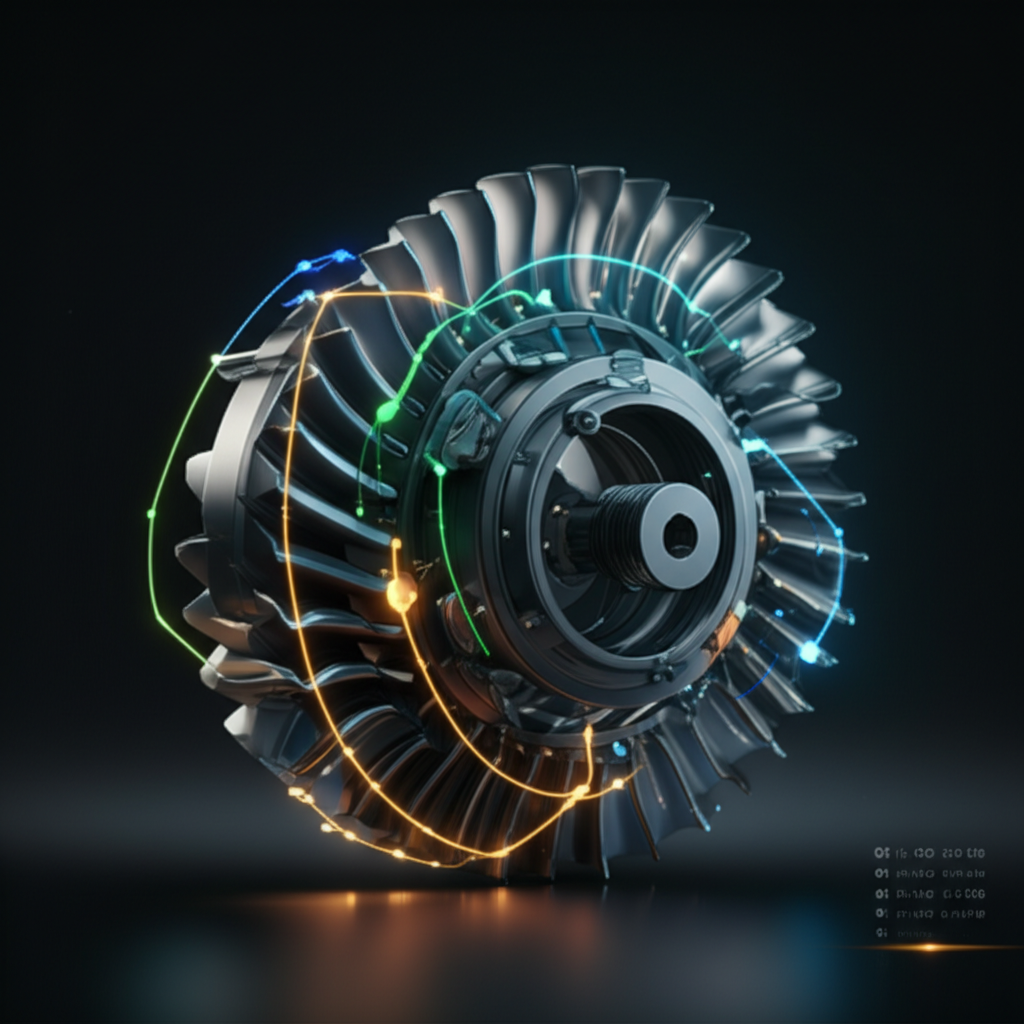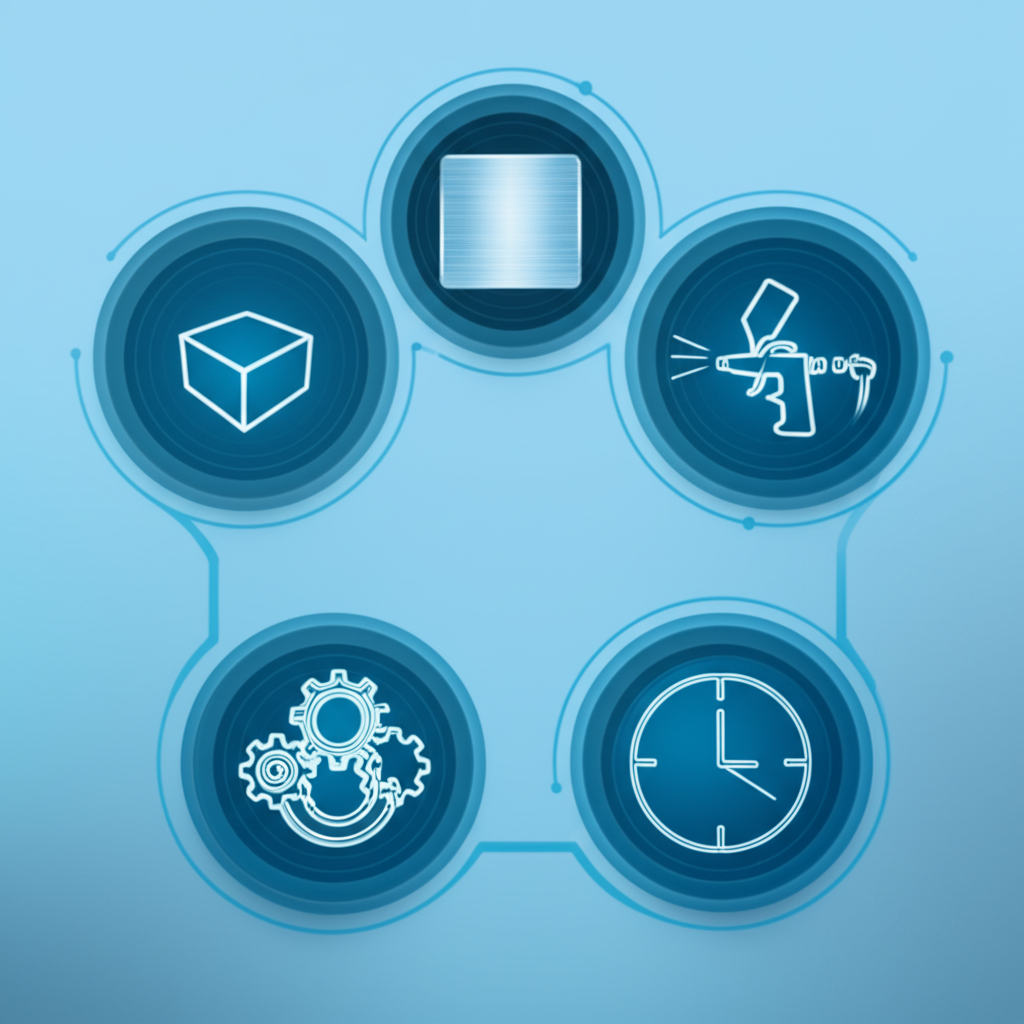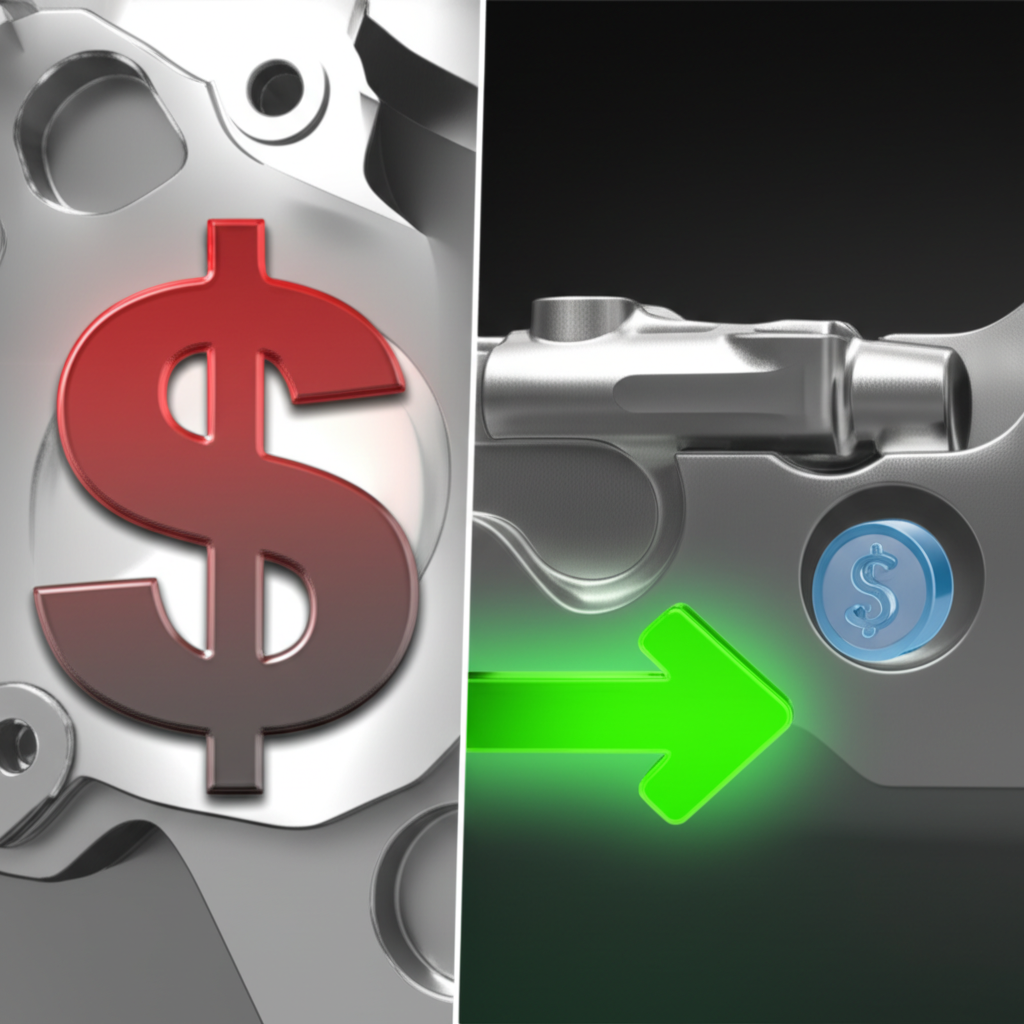Essential Factors of CNC Machining Cost Estimation

TL;DR
Estimating CNC machining cost involves summing up several key expenses: raw materials, machine setup and programming, machining time, and any post-processing or finishing. The final price is influenced by part complexity, tolerances, and order quantity. You can get a reliable CNC machining cost estimate using simplified formulas for rough calculations, free online calculators for initial figures, or by uploading a CAD file to a service provider for a precise quote.
The Core Factors Driving CNC Machining Costs
Understanding the final price of a CNC machined part requires breaking it down into its core components. While it may seem complex, the cost is a logical accumulation of specific, quantifiable factors. Each element, from the raw material to the operator's time, contributes to the total expense. A clear grasp of these drivers empowers you to make informed decisions and optimize your project budget effectively.
The primary cost drivers include:
- Raw Material Costs: The choice of material is a foundational cost factor. Common metals like aluminum are relatively affordable and easy to machine, whereas high-performance alloys such as titanium or Inconel are significantly more expensive and challenging to work with. The material's machinability directly impacts tool wear and machining speed, further influencing the cost.
- Machine Setup & Programming: Before any cutting begins, a skilled programmer must translate a CAD model into instructions for the CNC machine. This one-time, non-recurring engineering (NRE) cost also includes setting up the machine with the correct tooling and fixtures. This fixed cost is spread across all parts in an order, which is why larger quantities have a lower per-part cost.
- Machining Time: This is often the most significant portion of the cost and is directly tied to the machine's hourly rate. The total time required depends heavily on the part's complexity, the number of features, and the volume of material to be removed. More complex geometries that require multi-axis machines (like 5-axis) will take longer and use more expensive equipment than simple parts made on a 3-axis machine.
- Part Complexity and Tolerances: Intricate designs with features like deep pockets, thin walls, and complex curves increase machining time. Furthermore, parts requiring very tight tolerances demand more precise machinery, specialized tooling, and additional inspection steps, all of which drive up the cost.
- Post-Processing & Finishing: Raw machined parts often require secondary operations to meet final specifications. These can include services like anodizing, plating, powder coating, heat treating, or polishing. Each of these steps adds both time and expense to the production process.
- Order Quantity: Economies of scale play a crucial role. As mentioned, the initial setup costs are fixed. Ordering a larger batch allows these costs to be amortized over more units, significantly reducing the cost per part.

How to Estimate Your Machining Costs: Methods and Tools
Once you understand the factors that drive costs, the next step is to obtain an actual estimate. There are several methods available, ranging from quick manual calculations to highly accurate, automated quoting systems. The best approach depends on your specific needs, the stage of your project, and the level of precision required.
Manual Calculation
For a basic, back-of-the-envelope estimate, you can use a simplified formula. This method is useful for early-stage budgeting before a detailed design is finalized. The most common formula is a summation of the core cost drivers:
Total Cost = Material Cost + (Machining Time × Hourly Rate) + Setup Costs + Post-Processing Costs
To use this, you need to estimate each variable. Material cost can be found from suppliers, setup costs are often a flat fee provided by a machine shop, and post-processing is quoted separately. The biggest variable is machining time, which requires experience to estimate accurately based on a design.
Online Calculators and Spreadsheets
For a more structured approach, various online tools and downloadable spreadsheets are available. Websites like CustomPartNet offer free estimators where you can input part dimensions, material, and features to get a rough idea of the cost. Similarly, some resources provide Excel templates that help you organize the variables and calculate costs more systematically. These tools are excellent for preliminary design stages and comparing different design options quickly.
Instant Quoting Engines
The most accurate method for estimating costs is to use an instant quoting engine from a CNC machining service provider. These platforms, often powered by sophisticated AI, analyze your 3D CAD file directly. You simply upload your design, select your material, quantity, and finishing options, and the system provides a detailed, actionable quote in minutes. Companies like Xometry and Fictiv are well-known for these platforms. For projects requiring high precision and a wide range of materials, service providers such as XTJ offer advanced quoting for parts with tolerances as tight as +/- 0.005mm, handling everything from rapid prototypes to volume production.
Understanding CNC Machine Hourly Rates
A key variable in any cost estimation is the CNC machine hourly rate, which can vary significantly from as low as $20 to over $200 per hour. This rate isn't arbitrary; it's a calculated figure that covers the cost of the machine, its operation, and the shop's overhead. Understanding what influences this rate helps you appreciate why certain jobs cost more than others.
Several factors determine the hourly rate:
- Machine Type and Capability: A standard 3-axis mill is less expensive to purchase and operate than a complex 5-axis machining center. Machines capable of higher precision, faster speeds, or handling larger parts command higher rates.
- Operational Overhead: The rate must cover all business expenses, including facility rent, utilities, insurance, and administrative salaries. A shop located in a high-cost area will naturally have a higher overhead.
- Labor Costs: The wages of the skilled machinists and programmers who operate the equipment are a major component. The level of expertise required for a job can influence this factor.
- Tooling and Maintenance: Cutting tools wear out and need replacement. Machines also require regular maintenance, coolant, and lubricants to run effectively. These consumable and service costs are bundled into the hourly rate.

Actionable Strategies to Reduce CNC Machining Costs
While many cost factors are fixed, there are several strategic decisions you can make during the design phase to significantly lower your manufacturing expenses without compromising the part's function. This proactive approach is often referred to as Design for Manufacturability (DFM).
- Optimize Your Design (DFM): Simplicity is key. Avoid unnecessarily complex geometries, deep pockets, and thin walls that require specialized tooling or long machining times. Standardize hole sizes to minimize tool changes and use generous radii on inside corners where possible, as sharp internal corners require slower, more specialized operations.
- Select the Right Material: While a high-performance alloy might be tempting, consider if a more machinable and less expensive material like Aluminum 6061 or a plastic like Delrin would suffice. The cost savings from easier-to-machine materials can be substantial, both in raw material price and reduced machining time.
- Loosen Tolerances Where Possible: Applying tight tolerances across an entire part is a common and costly mistake. Analyze your design and specify high precision only for critical features and interfaces. Loosening non-critical tolerances dramatically reduces the need for extra machining passes, specialized tools, and time-consuming inspections.
- Leverage Volume Discounts: As discussed, setup costs are fixed. By increasing your order quantity, you spread that initial cost over more parts, which lowers the per-unit price. If you anticipate needing more parts in the future, ordering them in a single, larger batch is one of the most effective ways to save money.
Frequently Asked Questions
1. How to calculate CNC machining cost?
A simple way to calculate CNC machining cost is with the formula: Raw Material Cost + Machining Cost (hourly rate × hours) + Post-Processing Cost + Overhead/Setup Cost. For a precise figure, it's best to upload a CAD file to a manufacturer's online quoting platform.
2. What is the hourly rate for a CNC machine?
The hourly rate for a CNC machine typically ranges from $75 to $200 or more. The rate depends on the machine's complexity (e.g., 3-axis vs. 5-axis), its precision, and the overhead costs of the machine shop, including labor and location.
3. What is the typical CNC cutting design price?
There isn't a separate "design price." The cost associated with the design is part of the initial setup and programming fee, often called a non-recurring engineering (NRE) cost. This fee covers the time a programmer spends creating the toolpaths from your CAD model and is factored into the total quote for the first production run.
-
Posted in
cnc machining, cost estimation, DFM, machine hourly rates, manufacturing costs





